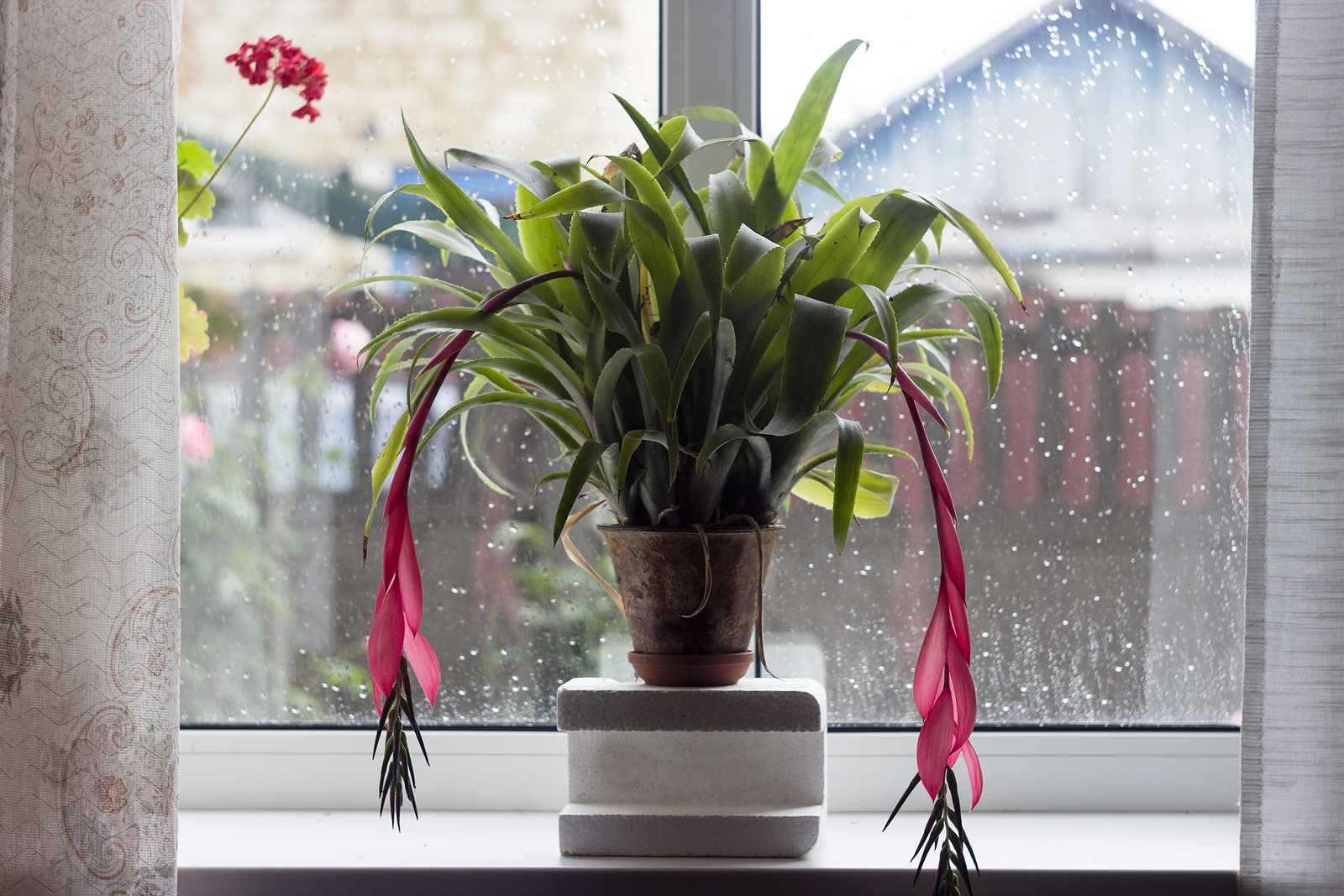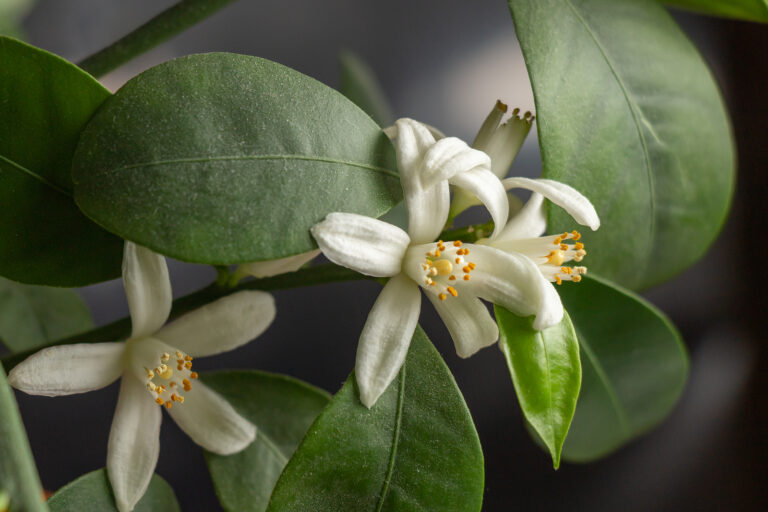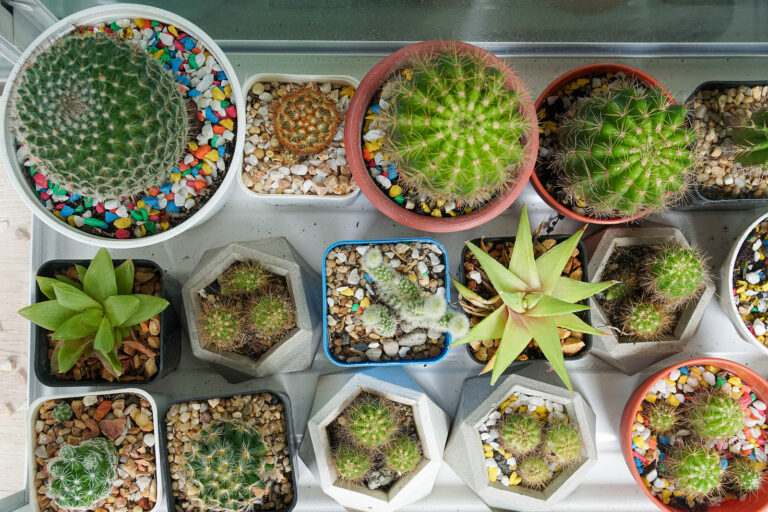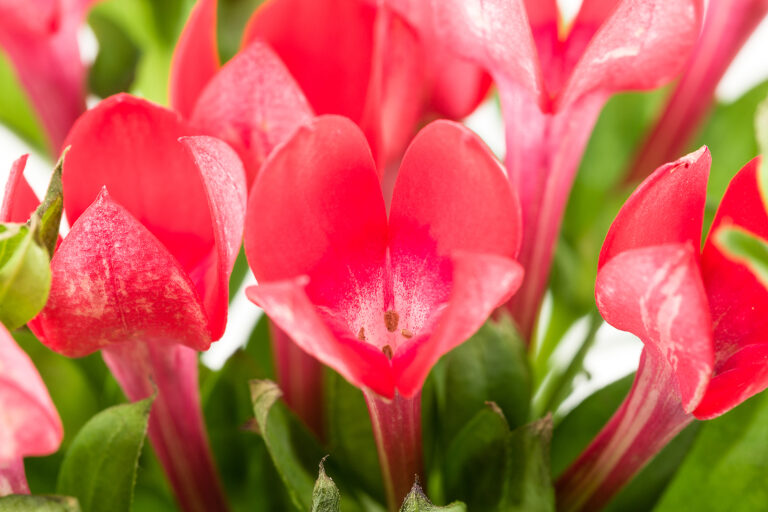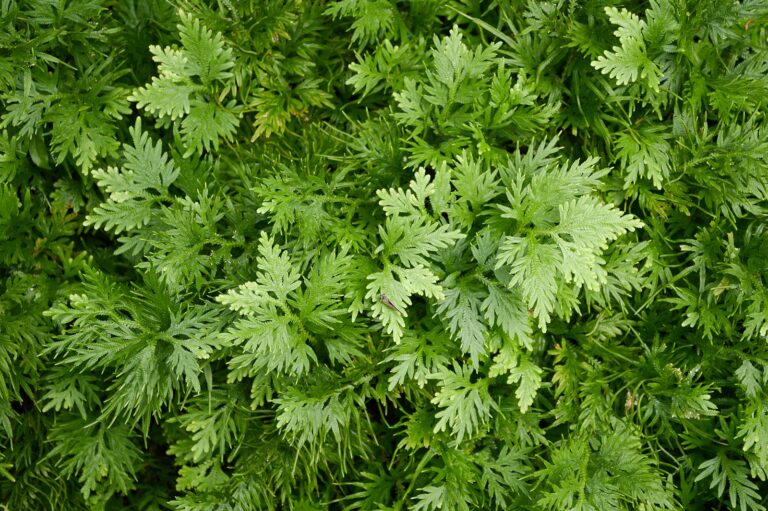How to Grow Vase Plant — Billbergia
Billbergia is a genus of bromeliads known for their tall, tubular rosettes and striking flower displays. Native to South America, particularly Brazil and Argentina, Billbergias are often grown for their dramatic flowers and beautiful foliage. These hardy plants are versatile, thriving both indoors as houseplants and outdoors in gardens, particularly in tropical or subtropical climates.
Billbergia is a tree-dwelling (epiphytic) evergreen bromeliad that bears brightly colored tubular flowers surrounded by rose-pink bracts that dangle in clusters over rosettes of strap-shaped leaves. Flowers appear between spring and autumn and last for three to four weeks.
Billbergia has stiff multicolored leaves that form rosettes. The unusual tubular blooms appear erect on a spike or droop gracefully; they stay in bloom for several weeks,
Billbergia is commonly grown in containers for display indoors or on patios. In subtropical and tropical climates it can be grown under trees as a groundcover on the limbs of trees.
Billbergia is a genus of about 52 species of epiphytic evergreen plants. Billbergia is native to southern Mexico, Central America, and parts of South America.
Billbergia is a beautiful and versatile bromeliad that brings bold colors and architectural form to both gardens and indoor spaces. With its tubular rosettes, vibrant foliage, and dramatic flower spikes, it’s an excellent choice for tropical and subtropical landscapes, container gardening, or as a low-maintenance houseplant. Easy to care for and highly adaptable, Billbergia is a great option for both beginner and experienced gardeners looking to add a touch of the exotic to their homes or gardens.
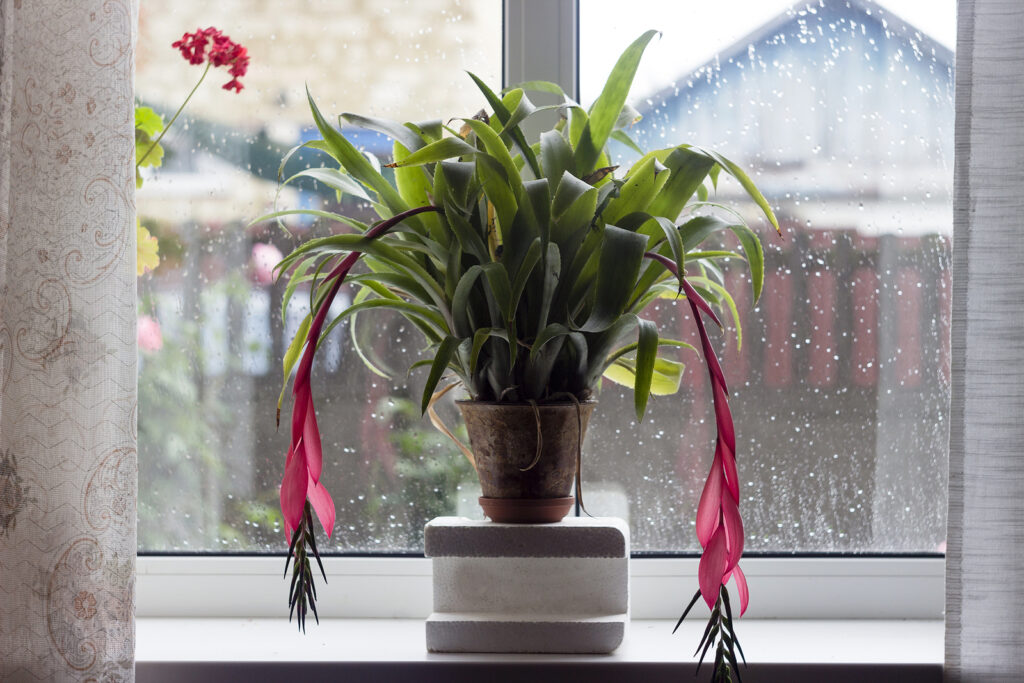
Billbergia description
- Foliage: Billbergia plants have narrow, arching, strap-like leaves that form a tall, vase-shaped rosette. The leaves can be smooth or spiny along the edges, and they often have interesting markings or bands of color, such as green, silver, or reddish tones. Some varieties feature spots or stripes, adding to their ornamental appeal.
- Flowers: Billbergia is highly prized for its showy, cascading flower spikes. The flowers are tubular and usually appear in vibrant shades of pink, purple, red, or blue, often with contrasting bracts in bright colors like pink or orange. The flowers last for a short time, but their striking appearance makes them stand out in any setting.
- Growth Habit: Billbergias grow in a compact, upright rosette form, reaching heights of around 1 to 2 feet. They can produce offshoots (pups), forming clumps over time. This makes them ideal for filling containers or garden spaces.
Billbergia uses in the garden
- Tropical or Subtropical Gardens: In warm climates (USDA Zones 9-11), Billbergia can be grown outdoors year-round. Their unique tubular shape and colorful flowers make them excellent additions to tropical or subtropical landscapes. They can be used in garden beds, borders, or as accent plants in shaded or semi-shaded areas.
- Rock Gardens: Billbergia’s ability to tolerate dry conditions makes it suitable for rock gardens, where their architectural form contrasts beautifully with stone and other succulents or drought-tolerant plants.
- Epiphytic Growth: In tropical regions, Billbergias can be grown epiphytically, meaning they can be mounted on trees or rocks. Their natural growth habit allows them to thrive in crevices, where they can add vertical interest to gardens.
- Containers and Pots: Billbergias perform very well in containers, making them a flexible choice for patios, balconies, or as portable garden plants. In pots, they can be mixed with other bromeliads or complementary plants to create lush, tropical arrangements.
Billbergia uses as a houseplant
- Ornamental Houseplant: Billbergia is an excellent houseplant choice due to its colorful flowers and attractive, vase-shaped foliage. It’s easy to care for and can thrive in indoor conditions with bright, indirect light. The plant’s compact size makes it suitable for smaller spaces, like windowsills, tabletops, or shelves.
- Low-Maintenance Plant: Billbergias are low-maintenance plants that don’t require a lot of attention. They can tolerate neglect and periods of dryness, making them ideal for beginner gardeners or those with busy lifestyles.
- Air-Purifying Plant: Like other bromeliads, Billbergia is believed to help improve indoor air quality by removing toxins from the air, making it a beneficial addition to homes or offices.
- Terrariums or Indoor Gardens: Due to their manageable size and low water requirements, Billbergias can also be used in large terrariums or indoor garden setups where humidity levels are higher.
Billbergia care tips
- Light: Billbergia prefers bright, indirect light, although it can tolerate partial shade. Indoors, it should be placed near a well-lit window, but out of direct sunlight, which can scorch the leaves. Outdoors, it grows best in shaded or semi-shaded areas.
- Watering: Billbergia needs moderate watering, and it’s essential to keep the central “cup” (the area formed by the rosette) filled with water. The soil should be kept slightly moist but well-drained, as the plant is prone to root rot if waterlogged. Allow the soil to dry slightly between waterings.
- Humidity: Billbergia appreciates higher humidity levels, making it ideal for bathrooms, kitchens, or terrariums indoors. Misting the plant occasionally or placing it on a humidity tray can help in drier environments.
- Temperature: Billbergias thrive in warm temperatures between 60-85°F (15-29°C). They are not frost-tolerant, so if grown outdoors in cooler climates, they should be brought inside during the winter.
- Soil: Use a well-draining potting mix, such as a mix designed for bromeliads, or a combination of peat, perlite, and orchid bark. The plant can also grow well mounted on bark or in loose, airy growing mediums.
- Fertilization: Billbergia benefits from occasional feeding with a diluted, balanced fertilizer during the growing season (spring and summer). Fertilize sparingly to avoid damaging the plant or diminishing its vibrant colors.
Billbergia styling ideas
- Container Plant: Billbergia’s striking form and colorful flowers make it a perfect centerpiece for container arrangements. Combine it with other bromeliads, ferns, or trailing plants to create a lush, tropical look on patios or indoor plant shelves.
- Indoor Accent Plant: The plant’s compact size and unique shape make it a great accent for indoor spaces. Place it on side tables, bookshelves, or kitchen counters to add a touch of greenery and bright color to any room.
- Hanging or Mounted Displays: Billbergias can also be mounted on pieces of driftwood or cork bark for a vertical display. This replicates their natural epiphytic growth habit and creates an artistic, living wall effect indoors or outdoors.
Billbergia outdoor/indoor adaptability
Billbergia is highly adaptable, making it suitable for both outdoor and indoor environments. In tropical or subtropical climates, it thrives in the garden, where its flowers and foliage make it a striking feature in shaded areas. In cooler regions, it can be easily grown as a houseplant or container plant that can be moved indoors when temperatures drop. This flexibility allows gardeners to enjoy Billbergia’s beauty year-round, regardless of climate.
Get to know Billbergia
- Plant type: Epiphytic evergreen perennial bromeliads
- Growing zones and range: Zones 9-15
- Hardiness: Hardy to Zone 9
- Temperature: Tolerates wide range of household temperatures.
- Height and width: 20 inches (50cm) tall and wide
- Foliage: Stiff, spiny-toothed leaves in basal clusters
- Flowers: Erect or arching panicles or racemes of showy bracts and tubular flowers that are short-lived flowers
- Bloom time: Summer
- Uses: Houseplant, tropical goarden
- Common name: Queen’s tears, vase plant
- Botanical name: Billbergia
- Family name: Bromeliaceae
- Origin: Southern Mexico, Central America, Northeast and Central South America
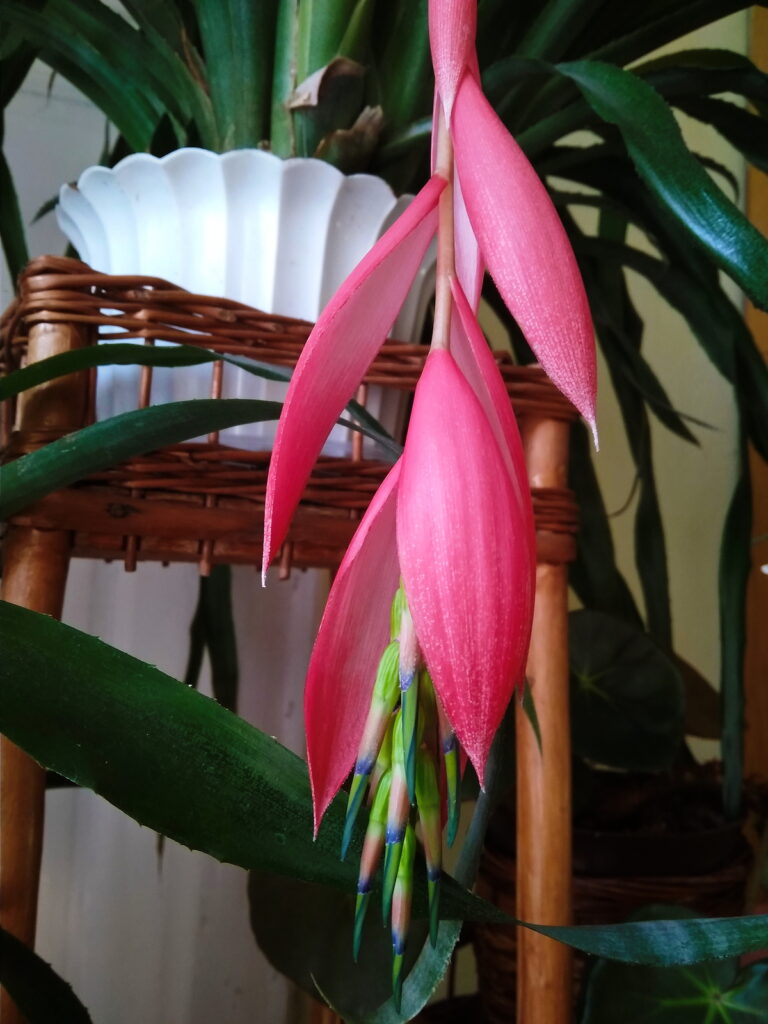
Where to plant Billbergia
- Light: Indoors grow Billbergia in filtered bright light, with 4 hours of direct sun in winter, from eastern or western exposure. Air circulation is important.
- Light: Outdoors grow Billbergia in partial shade.
- Soil: Grow Billbergia in an epiphytic bromeliad mix.
When to plant Billbergia
- Set Billbergia outdoors any time of the year in tropical and subtropical regions.
Planting and spacing Billbergia
- Space Billbergia 20 inches (50cm) apart.
How to water and feed Billbergia
- Water: Water Billbergia freely during the growing season. Let the soil dry moderately between thorough waterings. Keep fresh water in leaf cup when the plant is not flowering. Mist several times a week. Keep humidity at about 45% to 60%.
- Feeding: Feed Billbergia monthly, with mild liquid fertilizer. Avoid oil-based products such as fish emulsion. Spray on leaves, add to water in cup or apply to growing medium after watering; never fertilize a dry plant.
Billbergia care
- To lengthen the life of flowers, do not fill the leaf cup with water while in bloom.
- Billbergia dies within 2 years after flowering.
Growing Billbergia as a houseplant
- Grow Billbergia in a warm room with average humidity and direct light.
- The growing medium should be extra rich and well-drained; all the medium to dry out between waterings.
- Keep water in the cup at the base of the plant.
- Fertilize Billbergia monthly during spring and summer with quarter-strength liquid fertilizer.
Billbergia pests and diseases
- Check Billbergia for scale insects, mealybugs, and fungal leaf spots.
Billbergia propagation
- Propagate Billbegia by offsets or seeds. Root offsets in summer
Billbergia varieties to grow
- Billbergia amoena. Epiphyte grows to 24 inches (60cm) tall and 8 inche (20cm) wide; glossy, green leaves often white spotte; blooms are pale green or rose with deep re bracts.
- B. morelii bears lilac petals with red sepals.
- B. nutans, queen’s tears. Epiphyte grows to 20 inches (50cm) tall and wide; linear, strap-shaped gray-green leaves somtimes red-flushed; red bracts and green flowers with blue edges.
- B. pyramidalis. Epiphyte grows 20 inches (50cm) tall and 10 inches (25cm) wide; strap-shaeped, minutely toothe, fresh green leaves; bears bright orange bracts and red blooms with violet tips.
- B. saundersii, rainbow plant. Low-growing rosette; leaves have red undersides, red spines, and white spots; blooms are green with blue tips.
- B. vittata. Grows to 3 feet; leathery, olive to purplish green, silver-banded leacvd with red spines; petals are blue and bracts red.

